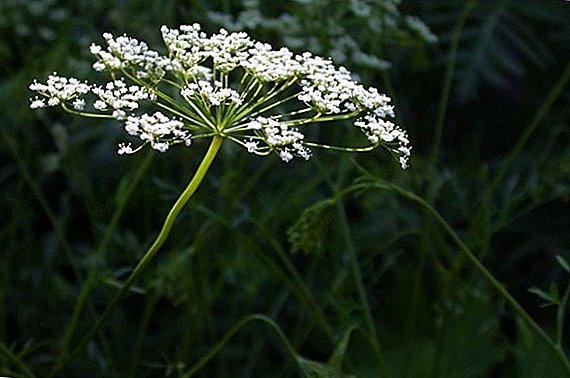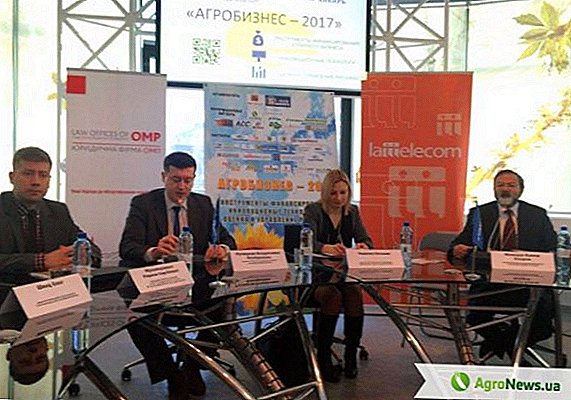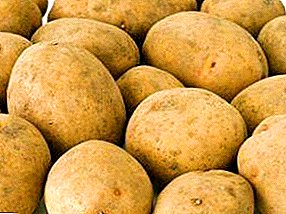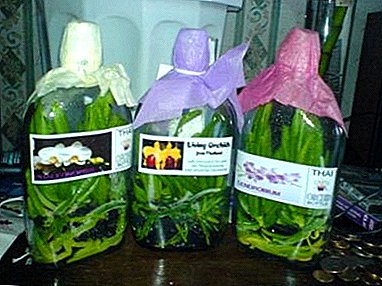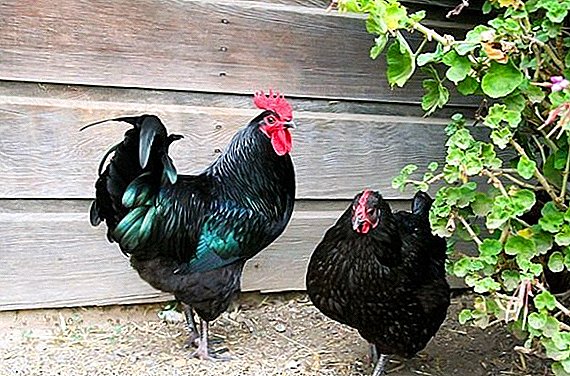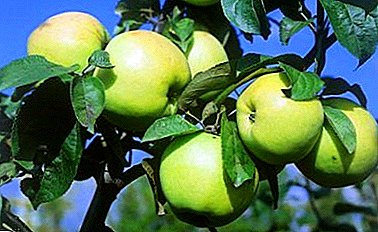 Weed control is a permanent attribute of the process of growing a crop or just caring for a garden plot, since the losses from these weeds are usually quite large.
Weed control is a permanent attribute of the process of growing a crop or just caring for a garden plot, since the losses from these weeds are usually quite large.
To make life easier for people involved in these things, herbicides were invented. These are chemicals that can help get rid of any unwanted vegetation.
Next, we consider the main characteristics, method of use and general instructions for use of the Banvel herbicide - a popular representative of the pesticide class of agricultural products.
Active ingredient and preparative form
Banvel pesticide is a means of highly efficient processing of grain crops in order to eliminate one-year and perennial dicotyledon broadleaf parasitic plants.
This is due to the active substance of this drug - dicamba in the amount of 480 g per liter and dimethylamine salt. Substance refer to the type of systemic herbicides.
As prescribed, dicamba is suitable for spraying such crops as wheat, corn, millet, hops, barley, rye and other grains.
For weed control, the following herbicides are also used: "Tornado", "Callisto", "Dual Gold", "Fabian", "Gezagard", "Stomp", "Hurricane Forte", "Eraser Extra", "Reglon Super", " Agrokiller ".Recommended after planting plants with a herbicide. By the nature of the action substance belongs to the selective influence.
From the point of view of physical characteristics, the active substance of this herbicide is a white or colorless crystalline powder, well soluble in an organic medium.  Banvel's formulation is an aqueous solution in a 5 liter sealed package, which makes it a very convenient pesticide to use. The chemical group of the herbicide are benzoic acid derivatives.
Banvel's formulation is an aqueous solution in a 5 liter sealed package, which makes it a very convenient pesticide to use. The chemical group of the herbicide are benzoic acid derivatives.
The drug is not able to ignite, which is undoubtedly a positive characteristic for substances of biochemical origin.
Benefits
Due to the composition and principle of action of this drug, there are many advantages of its use, the main ones are as follows:
- Banvel has established itself as a highly reliable and biologically effective herbicide.
- This herbicide has good compatibility with tank mixtures.
- This pesticide is a systemic substance that enters the plant not only through the green part, but also through the root system.
- Banvel is selective for crops.
- The drug is non-toxic (subject to use according to the norm and with compatible substances).
- A win-win for weed control, as it kills weeds resistant to dichlorophenoxyacetic acid, 2M-4X, triazines.
- Pesticide broad-spectrum.
- Banvel has the ability to purify perennial dicotyledonous weeds for sowing the following crops in crop rotation.
- The drug completely destroys more than 200 species of weed, the most dangerous of them: field bindweed, yellow and pink sow thistle.
- Banvel sulfonylurea and glyphosate resistance to drugs is preventable.
- The substance tends to completely disintegrate in the soil before the end of the growing season of the crop.
- Synergism of the drug.
- Efficiency herbicide.

Mechanism of action
Banvel is an extremely effective herbicide. The mechanism of the herbicide operation is the highly effective penetration of the plant-parasite into the body, the inhibition of its development processes and, as a result, the complete destruction of the aerial part and weed roots.
Important! A drug "Banvel" according to the instructions recommended for use on actively vegetating parasitic plants in dry calm weather and air temperature +10-28WITH.
How to prepare a working solution
The process of preparing a working fluid is very simple, the main thing is to strictly follow the instructions. Banvel belongs to the agents that are used as an aqueous solution.
First, you need to fill the sprayer tank one-tenth or one-fourth with water, and then proceed to mixing. To start the canister with the drug, it is desirable to shake well, add the required amount of the substance and top up the rest of the water.  When filling the tank, the water supply hose must be above the level of the liquid in the tank. After that, thoroughly mix the solution, do not stop stirring during processing.
When filling the tank, the water supply hose must be above the level of the liquid in the tank. After that, thoroughly mix the solution, do not stop stirring during processing.
In order to prepare a sprayable mixture, it is necessary to use only pure, non-chlorinated water. If Banvel is combined in a tank mix with other drugs, add funds to the tank in a clear sequence - first the main substance, and then additional.
Each subsequent component must be added after complete dissolution of the previous one. Avoid getting foreign substances in the mixture, as well as dirt and sand.
When and how to process
Spraying is a way to treat different crops like any other pesticide. The specificity of the application of the herbicide as a whole depends on what kind of crop we want to protect against weed.
Winter and spring wheat, barley, rye, and oats must be processed in the period from the beginning of the tillering to the output of the tube.
Corn herbicides have slightly different instructions for using the drug. Banvel is used in the phase of appearance of 2-4 leaves on the stem of the culture. 
Important! The main classes of weeds covered by the Banvel herbicide are as follows: all types of ambrosia, field thistle, main types of chamomile, picnic, hellebore, sorrel, hogweed, ranunculus, mustard, Teofrasta's hotpipe, pharmacy smoke, shepherd's bag.
Haylands and non-agricultural land are cultivated during the growing season of parasitic plants; there is no other recommendation for this type of spraying.
All crops manufacturer recommends processing only once. The drug acts on weeds best in the phase of 2-6 leaves in annuals and before the development of a 15-centimeter height in perennial weeds.
Banvel can be used alone or, with the aim of improving the effect, with other substances. It is compatible with such drugs as "Logran", "Peak", "Milagro".  Be sure to monitor the health of the equipment used for the treatment of cultivated plants.
Be sure to monitor the health of the equipment used for the treatment of cultivated plants.
Before using it, the manufacturer advises to check the working accessories of the spraying apparatus (if there are any malfunctions, then calibrate it), in addition to check the sterility of the container, main pipelines, nozzles and holes.
This is necessary so that in the event of residues in the tank of traces of other incompatible preparations with Banvel, they do not react and do not harm the crop.
Then it is necessary to determine the volume and adjust the uniform flow rate of the liquid through the tips and compare with the calculated data on the use of the working solution per one hectare.
Did you know? In Japan, 100% of cultivated areas are treated with pesticides, in Europe and the USA - 90% of grain crops, slightly less - in China.

Herbicide consumption rates
It is important to apply pesticide substances in standard quantities specified by the manufacturer in the factory instructions. The total consumption rates for the Banvels herbicide per hectare are:
- soil that is not used in agriculture, and the area for haymaking - 0.4-0.8 l;
- maize - 0.4-0.8 l;
- wheat, rye, oats, barley - 0.1-0.3 l.
For weeds, on which more than four leaves are present, for effectiveness, it is recommended to use the drug in the maximum quantity, but, of course, in the aisle limits.
In order to destroy young parasitic plants, a minimal amount of pesticide will suffice. The rate can not be exceeded, otherwise it can lead to the death of crops, soil poisoning and other toxic effects.
Impact speed
The visible effect of the drug should appear within one to two weeks from the moment the pesticide is used. It depends on weather conditions, the class of the plant-parasite, the quality of spraying, and the composition of the soil.  Herbicide may not work only in case of non-compliance with the rules of its use, the substance or the expiration of its shelf life.
Herbicide may not work only in case of non-compliance with the rules of its use, the substance or the expiration of its shelf life.
Period of protective action
According to the instructions for use, the period of protective action of the Banwell pesticide ranges from 4 to 6 weeks, which, in turn, depends on the conditions of its use. The absence of rain, as well as strong heat may well extend this period to two months.
Toxicity
This herbicide is not phytotoxic if applied within the normal range. According to the classification of the World Health Organization, the action of Banvel belongs to the third hazard group - a non-toxic substance.
Shelf life and storage conditions
Shelf life of the drug can always be found on its packaging. It is 5 years from the date of manufacture. The storage conditions for the Banvel herbicide are as follows: air temperature from -10 ° C to + 35 ° C, dry, inaccessible for children and animals, without direct sunlight.
Manufacturer
The manufacturer of the drug "Banvel" is the enterprise "Syngenta". It is a large multinational company that manufactures products for the agricultural industry.  According to the leadership of the corporation, their main goal has always been the mass production of goods that will not be harmful to the biosphere as a whole and, in particular, to human health.
According to the leadership of the corporation, their main goal has always been the mass production of goods that will not be harmful to the biosphere as a whole and, in particular, to human health.
Did you know? Dicamba was one of the first substances used for herbicides. The positive and negative aspects of its influence on plants were investigated by American scientists Zimmerman and Hitchcock as early as 1942.Perhaps that is why the product Banvel appeared on the market not only as an effective herbicide, but also characterized by the absence of a detrimental effect on the environment, of course, subject to use according to factory instructions.



